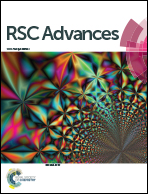Role of membrane disturbance and oxidative stress in the mode of action underlying the toxicity of differently charged polystyrene nanoparticles
Abstract
Surface charge is often hypothesized to influence toxicity of nanoparticles (NPs) including polymeric nanoparticles (PNPs) while oxidative stress is considered to be an important mode of action (MOA) for such toxicity. In order to investigate the role of membrane disturbance and oxidative stress in the MOA of PNPs, the cytotoxicity and a range of related cellular endpoints induced by monodisperse, fluorescent, cationic and anionic polystyrene nanoparticles (PSNPs) of 50 and 100 nm sizes were investigated in vitro in macrophage NR8383 cells. Only amine-terminated cationic PSNPs exhibited cytotoxicity which was accompanied by induction of intracellular reactive oxygen species (ROS), increased levels of cytoplasmic free calcium, a reduced phagocytic index, a reduced mitochondrial membrane potential (ΔΨm) and a decreased intracellular ATP content with the effects being more pronounced for 50 nm than 100 nm PSNPs. Both cationic and anionic PSNPs were found to increase the roughness of the cell membrane with the effect being more profound for cationic PSNPs. The pattern of protection by cellular antioxidants against the effects induced by positive PSNPs was similar to the pattern of protection against effects induced by the mitochondrial electron transport disrupting agent 2,4-dinitrophenol (DNP) and dissimilar to that for protection against the model compound for oxidative stress, i.e. hydrogen peroxide (H2O2). Surface charge influences the cellular interaction for NPs. The results collectively indicated that membrane interaction, and disturbance of the mitochondrial electronic transport chain (ETC) may represent a principal mechanism of toxicity for cationic PSNPs resulting in ROS production and oxidative stress as secondary effects.


 Please wait while we load your content...
Please wait while we load your content...